On Dec. 14, 1962, Mariner 2 completed the first successful close-up observations of another planet when it flew by Venus. Managed by NASA’s Jet Propulsion Laboratory (JPL) in Pasadena, California, the spacecraft made several important scientific discoveries not only about the planet but also about interplanetary space during its transit. The road to Venus, however, proved anything but easy. Scientists knew relatively little about Venus at the time. Because of similar size as Earth, scientists often called the two “sister planets.” Since it orbited closer to the Sun, most scientists assumed Venus had a warmer surface, with a climate similar to Earth’s tropics. A young scientist named Carl E. Sagan, then at the University of California, Berkeley, however, proposed that the known high concentration of carbon dioxide in Venus’ atmosphere created a runaway greenhouse effect, leading to extremely high temperatures at the surface.
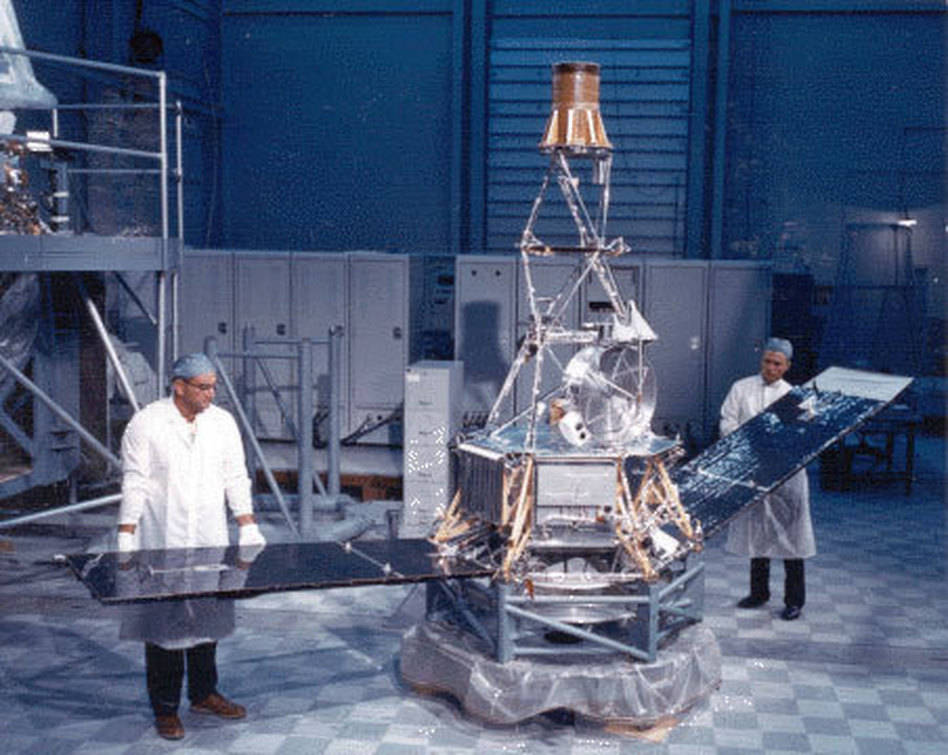
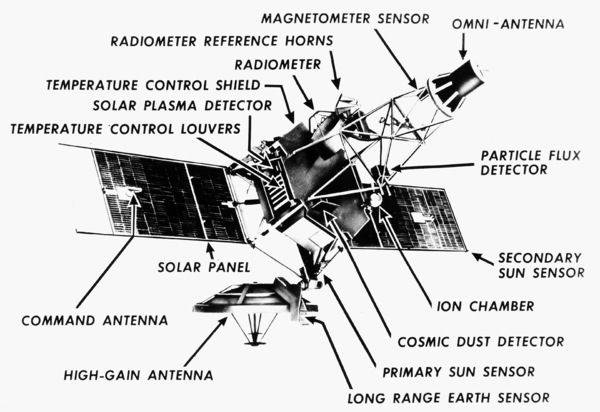
Left: Engineers prepare Mariner 2 for flight. Right: Schematic diagram of Mariner 2,
showing its major components and scientific instruments.
JPL planned, developed, and executed the first mission to Venus in about one year. To save development time, JPL adapted the Ranger lunar probe then under development to build the Venus explorer. The 447-ppound spacecraft carried seven scientific instruments weighing 46 pounds to study Venus’ atmosphere and temperature, to search for a possible magnetic field, and to study cosmic rays, the solar wind and cosmic dust during the trip to the planet. Mariner 2 sent data back to Earth at the then-blistering rate of 8-1/3 bits per second. The instruments included:
- A crystal microphone for measurement of the density of cosmic dust.
- A proton detector for counting low-energy protons in the solar wind.
- Two Geiger-Müller (GM) tubes and an ion chamber, for measuring high-energy charged particles in interplanetary space and in the Venusian equivalent of Earth’s Van Allen Belts (later shown not to exist).
- A special-purpose GM tube for measuring lower energy radiation, particularly near Venus.
- A three-axis fluxgate magnetometer for measuring the Sun’s and Venus’ magnetic fields.
- A microwave radiometer for measuring the temperature of the planet’s surface and its cloud tops.
- Two infrared optical sensors for parallel measurement of the temperature of Venus.
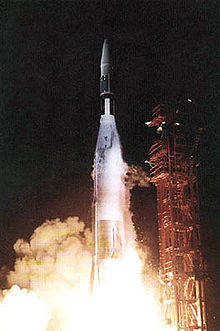
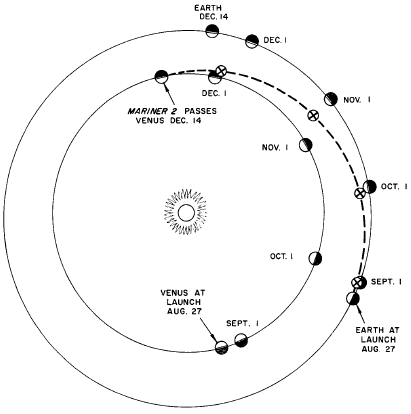
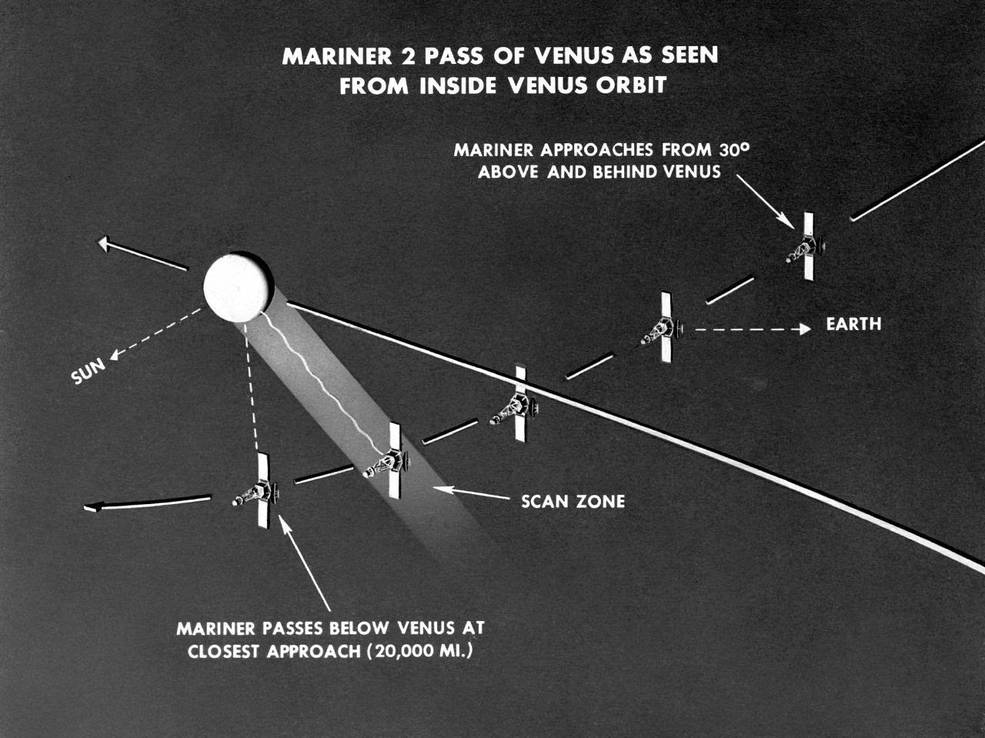
Left: Launch of Mariner 2. Middle: Mariner 2’s interplanetary trajectory from Earth to Venus.
Right: Trajectory of Mariner 2’s flyby of Venus.
Planned as a two-spacecraft project, Mariner 1 launched first on July 22, 1962, but its Atlas-Agena rocket veered off-course and the range safety office destroyed it in the first few minutes of flight. Engineers traced the fault partly to a missing overbar on a symbol in communications software. Mariner 2 followed on Aug. 27 and this time the launch succeeded and the spacecraft entered solar orbit on its way to Venus. During the 110-day journey, Mariner 2 sent back valuable information about its interplanetary environment including confirming the existence of the solar wind, a stream of charged particles emanating from the Sun. The spacecraft encountered several hardware anomalies, many of which inexplicably fixed themselves. By the time Mariner 2 approached Venus, one of its solar arrays had failed and the vehicle came dangerously close to overheating, but it remained healthy enough to complete its scientific mission.
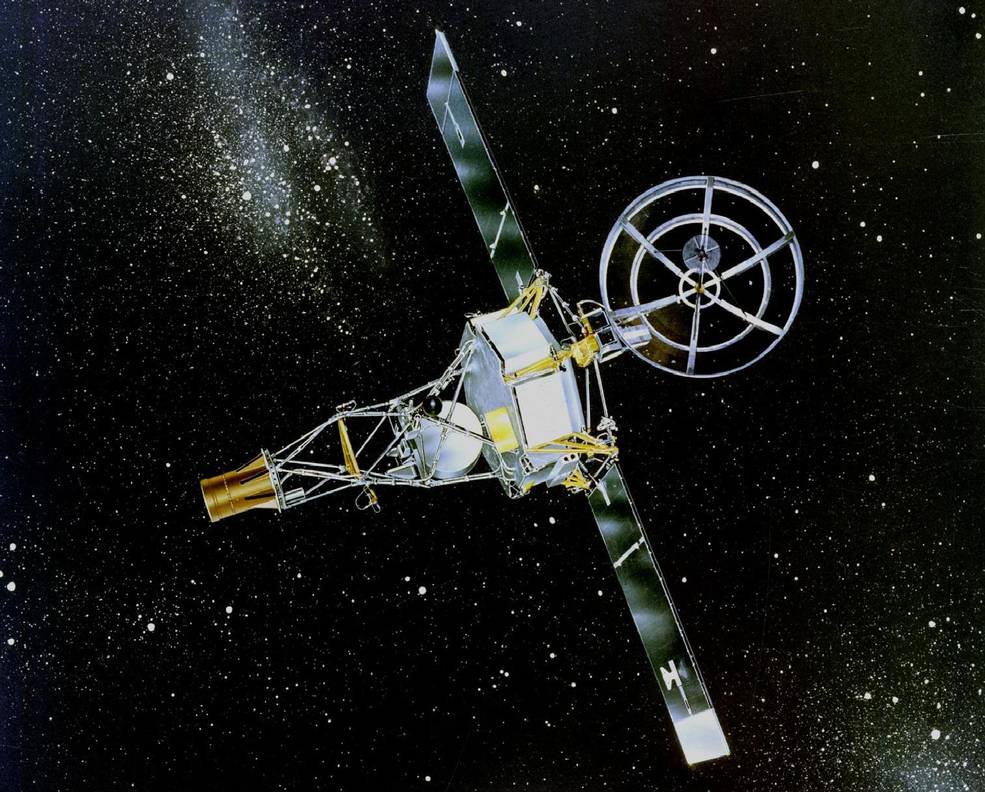
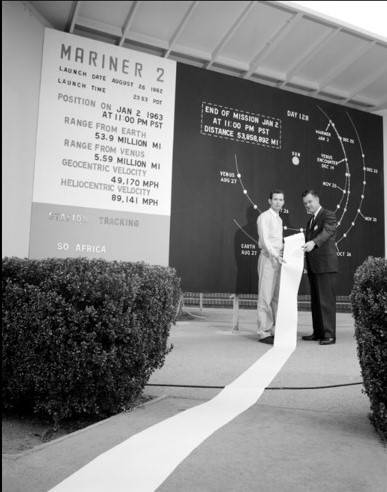
Left: Illustration of Mariner 2 on its way to Venus. Right: Two engineers at NASA’s
Jet Propulsion Laboratory in Pasadena, California, display the data
from Mariner 2’s Venus flyby.
On Dec. 14, Mariner 2 passed within 21,564 miles of Venus, and continued in solar orbit, transmitting the data it had collected back to Earth. It measured the temperature at Venus’ surface at 300oF to 400oF, confirming Sagan’s greenhouse effect prediction, and the atmospheric pressure at 20 times greater than on Earth. Future spacecraft would measure even higher temperatures and pressures. Scientists had to discard previous conceptions of Venus as a tropical haven. Unlike Earth, Mariner 2 found that Venus has no appreciable magnetic field and therefore no protective trapped radiation belts to prevent cosmic rays from bombarding the planet. The spacecraft sent its last transmission on Jan. 3, 1963, having completed the first robotic exploration of another planet.

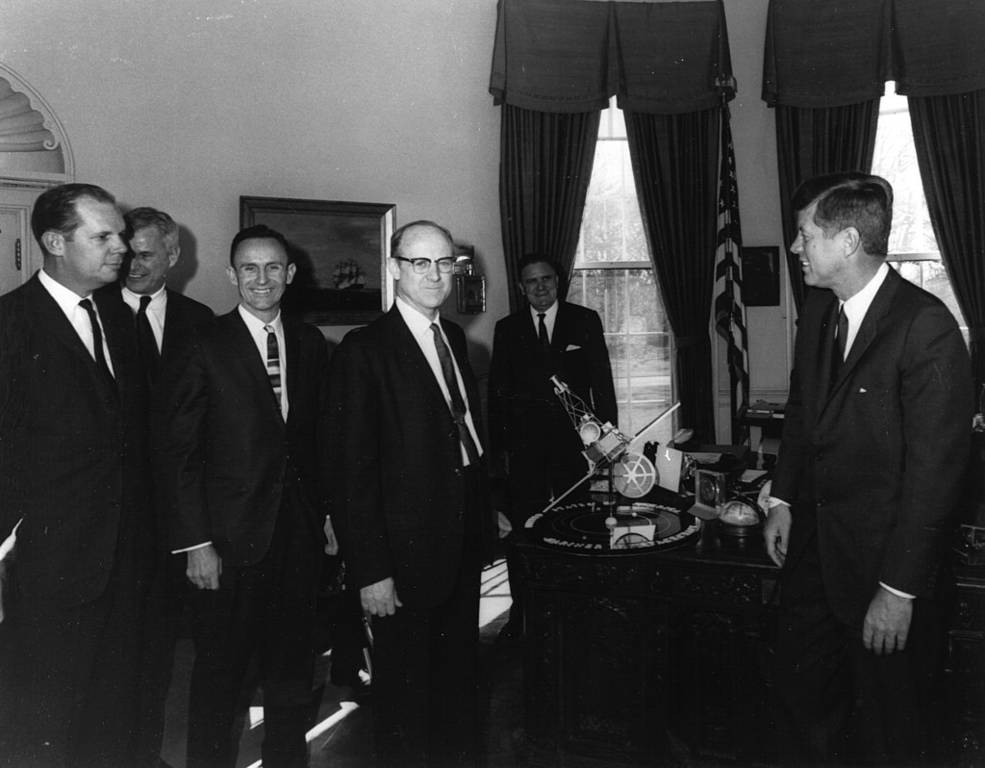
Left: At the 1963 Tournament of Roses Parade in Pasadena, California,
the NASA Jet Propulsion Laboratory (JPL) float featured Venus and
Mariner 2. Right: William H. Pickering, director of JPL, center,
presents a model of Mariner 2 to President John F. Kennedy at
the White House, as NASA Administrator James E. Webb,
behind the model, and Mariner 2 project manager
Jack N. James look on.
Jack N. James, project manager at JPL, later said of Mariner 2, “There will be other missions to Venus, but there will never be another first mission to Venus.” As for JPL, dozens of missions that explored all the planets from Mercury to Neptune followed Mariner 2’s pioneering flight of discovery.
For more on Mariner 2, see https://www.jpl.nasa.gov/missions/mariner-2























